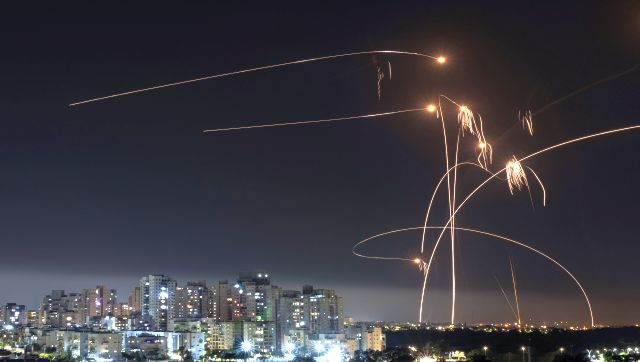Amid the Israel-Hamas war, a lot has been said about Israel’s Iron Dome air defence system. First launched in 2011, this cutting-edge rocket-defence system was believed to be ironclad. However, that belief changed on 7 October, when Hamas, the Palestinian terrorist group, sent a barrage of rockets – almost 5,000 in the first 20 minutes. Now, while experts continue to debate on the accomplishments and limitations of this air defence system, it has been reported by the Times of India that India is readying its own long-range air defence system and plans to deploy it by 2028-2029, under the ambitious Project Kusha. What do we know about this new weapon that will be added to India’s arsenal soon? How will it serve India’s interest? India’s new long-range air defence system India’s Defence Research and Development Organisation (DRDO) is developing its own long-range air defence system, similar to the Iron Dome, which will be capable of detecting and destroying incoming stealth fighters, aircraft, drones, cruise missiles, and precision-guided munitions at ranges of up to 350 kilometres. According to the Times of India, this new LR-SAM will have interception capabilities comparable to the Russian S-400 Triumf air defence system recently inducted by the Indian Air Force (IAF). The report added that it will feature long-range surveillance and fire control radars. Additionally, it will have different types of interceptor missiles that can hit hostile targets at 150-km, 250-km and 350-km ranges. The new air defence weapon is also meant to provide strategic and tactical cover to vulnerable areas, with the DRDO saying it will be “effective even against high-speed targets with low-radar cross-section”. A source also told Times of India that the weapon being developed will have a single-shot kill probability of not less than 80 per cent for single missile launches and not less than 90 per cent for salvo launches. The DRDO source further said that the system is capable of intercepting fighter-sized targets at a 250-kilometre range, while larger aircraft like AWACS (airborne warning and control systems) and mid-air refuelers can be intercepted at a 350-kilometre range. Also read: Why does India have a ‘list of arms’ it doesn’t want to import? India’s Project Kusha The development of India’s homemade version of the Iron Dome is being done under the Indian Air Force’s Project Kusha. The project has received approval for funding totalling around Rs 21,700 crore, and it will be executed by the DRDO jointly with private and public sector industry. According to the Indian Defence Research Wing, Project Kusha is a significant milestone in India’s step to Aatmnirbhar Bharat .
Significance of India’s Iron Dome The desi version of the Iron Dome will boost India’s defence capability and ensure the safety of our skies. As experts explain the system will possess the ability to target hostile forces at varying distances, making it a versatile and formidable defensive asset. This is important at a time when India faces threats from neighbouring countries such as Pakistan and China. The defence system will act as a deterrent against these hostile countries. China, in particular, is said to have installed several missile batteries across the Indo-Tibetan border, also known as the Line of Actual Control (LAC). Given the fact that China can fire missiles at India and can direct much of the Indian Air Force’s time and energy towards trying to neutralise such batteries and launching grounds, India needs to equip itself with high-tech and precision-guided air defence systems. But some experts fear that India’s version of the Iron Dome won’t be as beneficial as thought. Air Marshal Anil Chopra (retired), who heads the Centre for Air Power Studies said he had been a proponent of the system since 2013, but not today. Speaking to The Print_, he said, “But now we have the S-400 missile system. And we are also looking at the American NASAM system for protection of the national capital. So, it does not make sense now.”_ An IAF officer further explained that while Iron Dome is an excellent air defence system, it was created keeping in mind the threat faced by Israel. “India faces different threats. Israel has other air defence systems in place to cater to threats like what India faces. Also, we have a multi-layered air defence system and are developing our very own ballistic defence shield,” he was quoted as telling The Print. Israel’s Iron Dome air defence system But what is this Israel’s Iron Dome air defence system that we are talking about? Simply put, it is a series of batteries that use radars to detect incoming short-range rockets and intercept them Each battery has three or four launchers, 20 missiles, and a radar. Once the radar detects a rocket, the system determines whether the rocket is headed toward a populated area. If it does, it launches an intercepting missile to destroy the rocket. According to the military, all interceptions occur in Israeli airspace. According to reports, the Iron Dome is roughly 90 per cent effective, but, as Associated Press reports, it can get overwhelmed if a mass barrage of rockets is fired, allowing some to slip through. With inputs from agencies
)